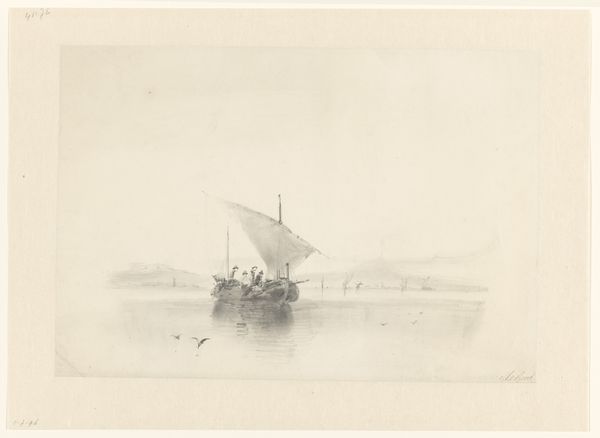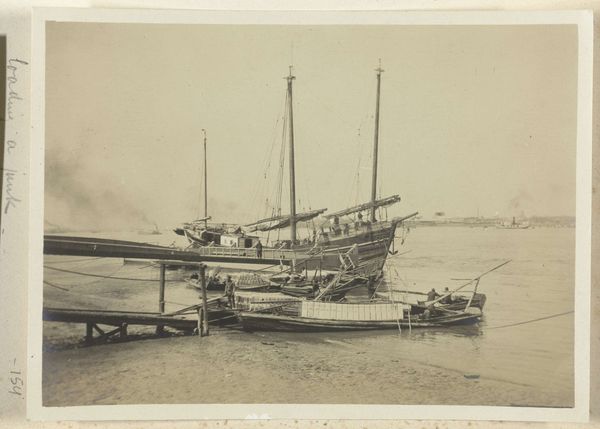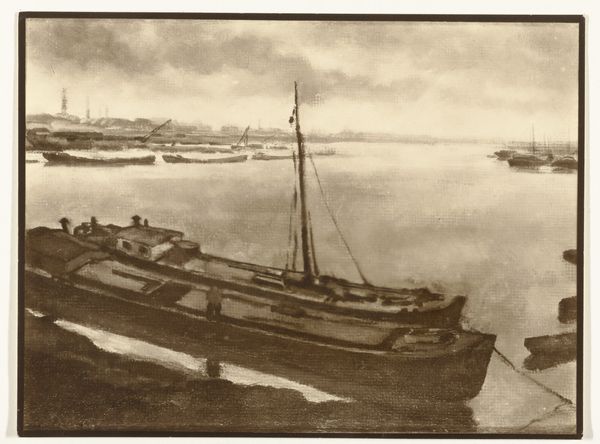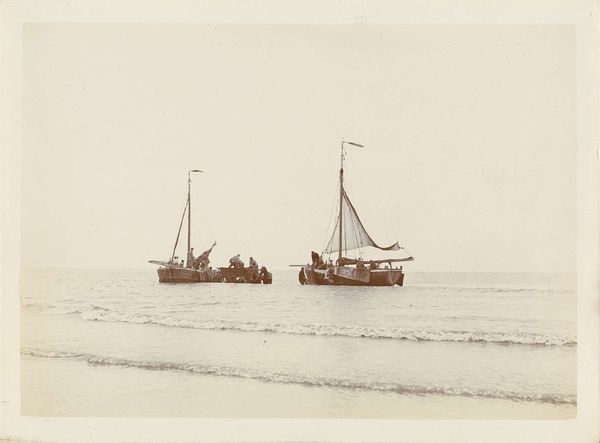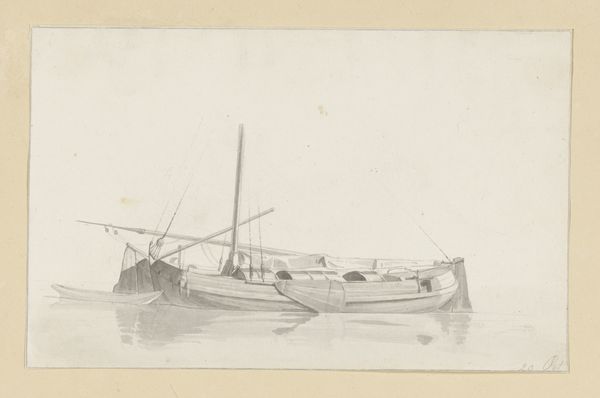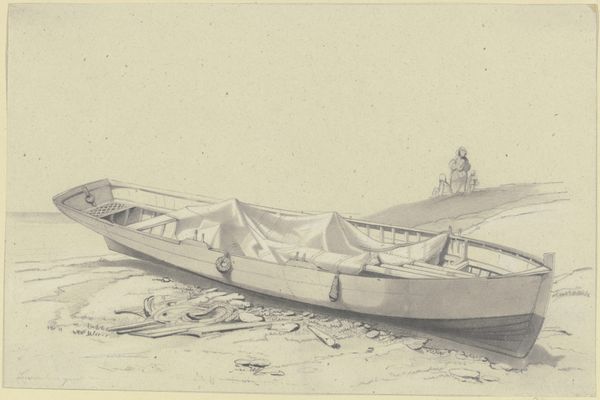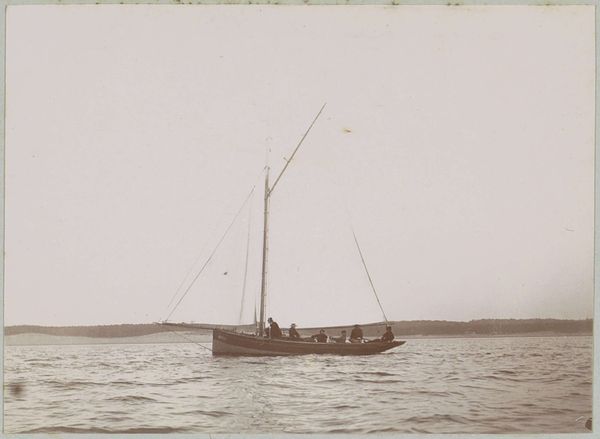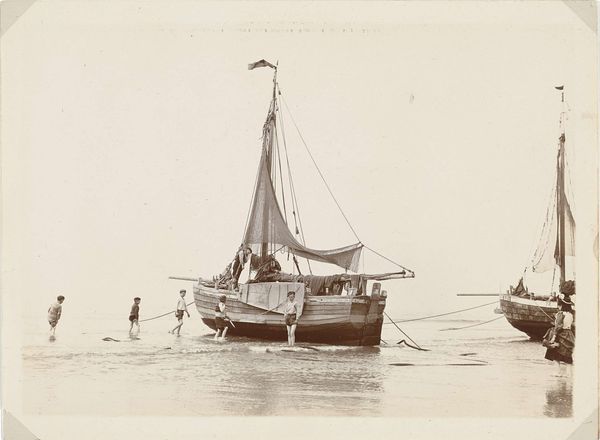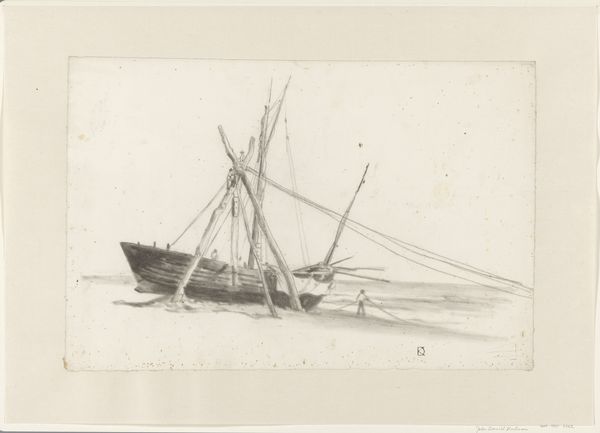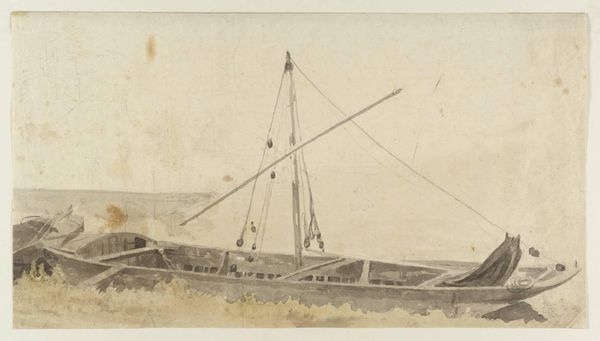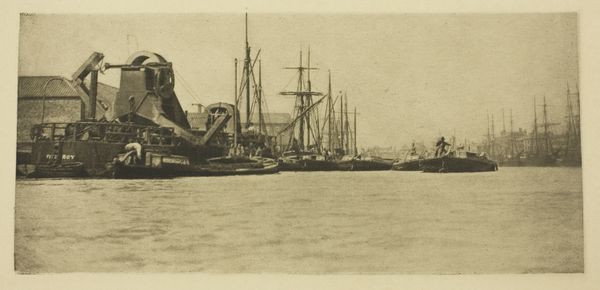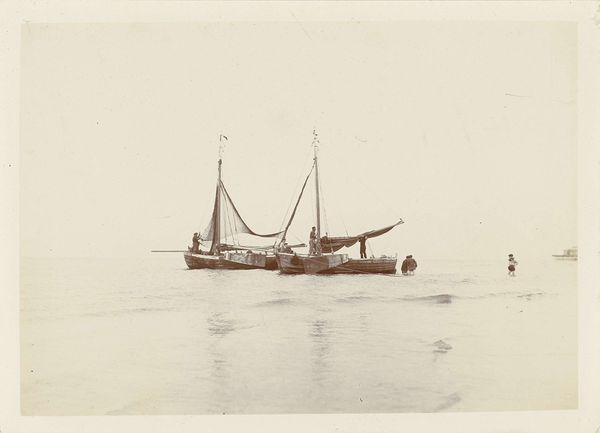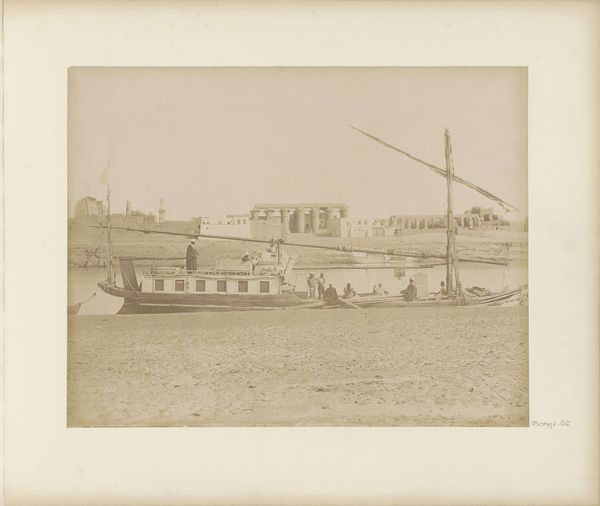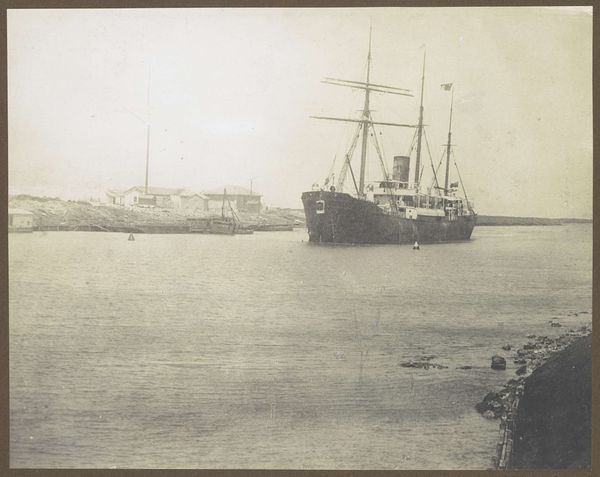
Louksor, Petit Bras du Nil - Barque de Voyageurs 1851 - 1852
0:00
0:00
print, photography, albumen-print
#
boat
# print
#
landscape
#
river
#
outdoor photography
#
photography
#
ancient-mediterranean
#
albumen-print
Dimensions: 24.4 x 30.7 cm. (9 5/8 x 12 1/16 in.)
Copyright: Public Domain
Editor: Here we have "Louksor, Petit Bras du Nil - Barque de Voyageurs" by Félix Teynard, captured between 1851 and 1852, using the albumen print process. There's a quiet stillness to it, a stillness emphasized by the muted tones and expansive sky. What story do you see within the material presence of this photograph? Curator: For me, the albumen print immediately highlights a particular intersection of art, science, and industry. Teynard's choice of this medium, itself a product of complex chemical processes, underscores photography’s early dependence on industrialized production. We see not just a depiction of a boat on the Nile, but a document shaped by specific technologies and economic forces of its time. Consider the labor involved in creating this single print. Editor: That's fascinating! So, you're saying that beyond just the artistic intention, the physical creation of the piece reflects broader societal influences? Curator: Precisely. The albumen print itself becomes a key element in interpreting the work. It’s not simply a neutral window onto a scene; it's a constructed artifact bearing the marks of its making. The very materiality speaks to early photographic processes rooted in resource extraction and factory production, mirroring other colonial enterprises. How does the photograph become a commodity through its creation and distribution? Editor: So, it shifts our focus from solely what is represented, to how that representation came into being and its place in the larger material world. Thinking about the albumen print makes the art not just about aesthetic value, but about its existence as a physical thing connected to labour and trade. Curator: Indeed. We gain insights into its moment of creation that can't be accessed otherwise. Examining art through its materials lets us understand better social and historical conditions surrounding its production. Editor: Thank you for enlightening me; this really changes the way I look at photographs now. I never really considered the medium as part of the story of the image itself.
Comments
No comments
Be the first to comment and join the conversation on the ultimate creative platform.
